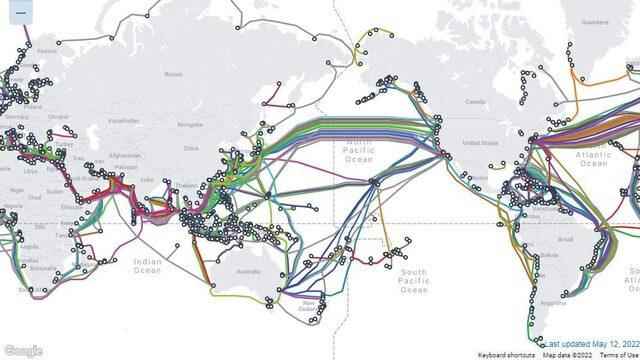Scientists have discovered that internet cables on the seafloor can be used to detect earthquakes and tsunamis and to understand the change in ocean currents caused by climate change.
In research conducted by the UK’s National Physical Laboratory (NPL) and its partners, the technique developed by the scientists was tested on fiber optic cables between the UK and Canada.
The researchers explained that they developed this technique because permanent underwater earthquake sensors are so costly that it is very cost-effective to use existing cables instead of installing new equipment.
Speaking to the BBC, NPL’s Dr. “Even though 70 percent of the Earth’s surface is covered with water, all seismic stations are on land. It is extremely difficult to place a permanent sensor underwater,” said Giuseppe Marra.
It is estimated that there are more than 430 fiber optic lines on the ocean and sea floors, and their total length exceeds 1.3 million kilometers.
In the study published in the journal Science, scientists revealed that the light passing through fiber optic cables can show little change due to factors such as vibration, pressure change and temperature, and this can be detected with extremely sensitive instruments.
Scientists used a 5,860 kilometer cable between SouthPort in England and Halifax in Canada for their experiments.
Using the so-called “repeater” devices, which are located at different points along this cable and serve to strengthen the signal, as sensors, one of the research team, Dr. “If we apply this technique to all the cables on the seafloor, we can turn them into a detector chain,” said Mara.
“With these we can observe earthquakes, currents and more.
“Expanding our seismic network from land to the seafloor will allow us to better understand the Earth’s interior structure and dynamic movements.”
The researchers explained that with this technique, the center of the earthquake can be detected, just as it is done with sensors on land.
Another advantage of the technique is that it provides the opportunity to see how the currents on the seafloor change with global warming.
How the temperature of the sea floor changes can also be monitored theoretically with this technique. But this has not been tested yet.
In addition to NPL, technology giant Google, Edinburgh University and the Italian National Meteorological Institute also contributed to the research.
Scientists think that volcanic eruptions under the sea can also be detected with this method.
